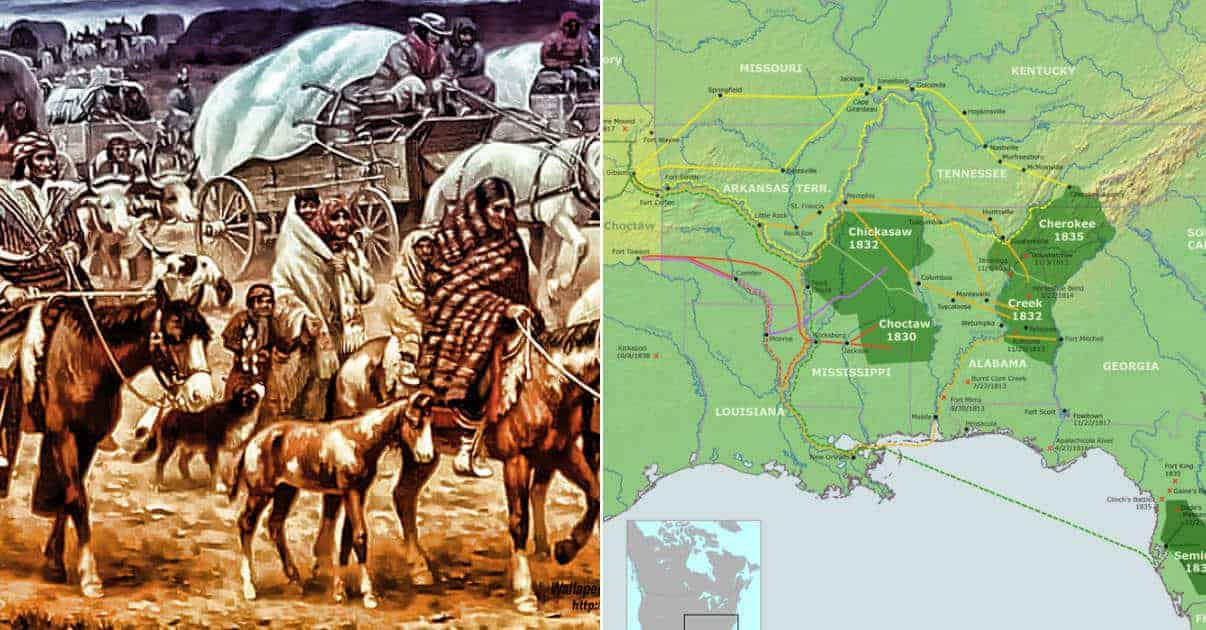
The Indian Territory
The romantic view of the Cherokee (and all American Indians) as nomadic hunter gatherers living in wigwams and other similar shelters was long gone by the time of the Indian Removal Act, at least as regards the eastern tribes, with the possible exception of some of the Seminole bands in the Everglades. The Cherokee had a sophisticated political structure including partisan political parties, and a process of negotiating within the tribe and with entities outside of its structure. John Ross wore western garb, and was a man of education and wealth. This was true of most of the tribal leaders.
Several of these Cherokee leaders came to consider the removal to the Indian Territory to be a better idea than remaining in the eastern lands, agreeing with Jackson and other American leaders that the Cherokee traditions could not survive the pressure of white settlement. Led by Major Ridge, his son John, and Elias Boudinot among others, they came to be known as the Treaty Party. They supported the removal, argued that the best action for the Cherokee was to obtain the best possible terms for the sale of the lands they occupied, and travel to the west.
These leaders were of a faction which was a distinct minority among the Cherokee, in opposition to John Ross and the majority which supported staying where they were. In 1832 Ross canceled the tribal elections, and the Treaty Party split from the main body of the Cherokee, with the Ross faction becoming the National Party, and the Treaty Party entered into negotiations with the Americans for compensation for leaving the lands they occupied. Ross was forced to attempt to achieve better terms as forcible removal became more and more of a reality.
Ross continued to argue against the removal up to the time when he was contracted by the US Army to be in charge of its execution. The agreement, the Treaty of New Echota, was negotiated and signed primarily by the leading members of the Treaty Party (also known as the Ridge Party). Thus the treaty, which was for compensation for removal rather than outright purchase of land, was entered into with a group which did not represent the views of the majority of the Cherokee. Ross continued to call the treaty fraudulent as he accepted the contract to execute its terms.
During the relocation and after the arrival in the Indian Territory many of the leaders of the Treaty Party died, most by assassination. Major Ridge, John Ridge, and Elias Boudinot were murdered on June 22, 1839, in the Indian Territory. Boudinot’s brother, Stand Watie, another Treaty Party leader, survived an attack the same day. This was the beginning of a seven year period of murders, assaults, and other violence against property between the Cherokee factions in their new home in the Indian Territory. Ross denied any involvement in the murders and subsequent violence, which required the involvement of the US Army before it was brought to an end in 1846.

